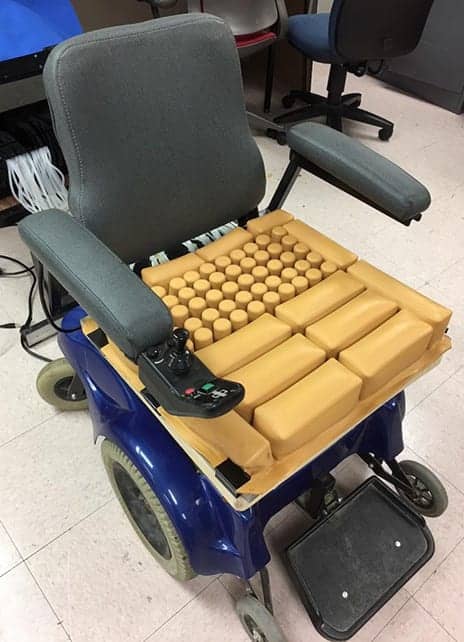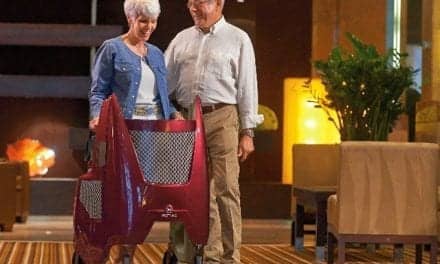
University of Texas at Arlington researchers have recently received a patent for their smart seat cushion, pictured here. (Photo courtesy of UTA)
Researchers from University of Texas at Arlington have patented a smart wheelchair seat cushion designed to use air pressure changes to redistribute body weight to help prevent ulcers caused by sitting.
The same technology could be used to create prosthetic liners that adapt their shape to accommodate changes in body volume during the day and maintain a comfortable fit for the prosthesis.
Poor prosthetic fit can cause skin damage and create sores in the residual limb of the wearer, according to the researchers.
“Pressure ulcers caused by long periods of sitting without relieving pressure at boney regions such as the tailbone, frequently occur in people who spend significant amount of time on wheelchairs. In the case of prosthesis users, poor fitting of the prosthesis leads to pressure injuries for amputees that can severely affect their daily life,” says Muthu Wijesundara, co-inventor of the technology and chief research scientist at UTA’s Research Institute or UTARI.
“Our technology improves on existing solutions by including real-time pressure monitoring and automated pressure modulation capabilities to help combat the formation of pressure ulcers or sores,” Wijesundara adds, in a media release from University of Texas at Arlington.
When a person sits on the cushion, a network of sensors generates a pressure map and identifies vulnerable areas where pressure relief is needed. Automated pressure modulation uses this data to reconfigure the seat cushion surface to offload and redistribute pressure from sensitive areas. Additionally, the seat cushion periodically changes the pressure profile to eliminate pressure buildup over time.
The researchers demonstrated the effectiveness of the technology using healthy volunteers with different weights who assumed different positions: leaning forward, backward, to the left or right. In all cases, the seat cushion measured the pressure immediately and automatically performed an effective pressure redistribution to offload pressure from sensitive areas, the release explains.
“This technology has multitude of applications in biomedical fields,” Wijesundara continues. “We really feel that it shows great promise in helping patients and their caregivers avoid the pain of stress ulcers and sores.”
[Source(s): University of Texas at Arlington, EurekAlert]






This article is really very interesting and effective.Your post is very interesting to read.
Are these for sale and where can I get one
Wheelchair cushions make sitting for prolong period of time much more comfortable. In addition to protecting the skin from excessive or uneven pressure. In our site u may find variety of basic types cushions.